Presentation: Cancer Experience of CALD Populations in Australia
VerifiedAdded on 2022/10/19
|12
|1266
|315
Presentation
AI Summary
This presentation addresses the significant challenges faced by Culturally and Linguistically Diverse (CALD) populations in Australia concerning cancer. It highlights the higher mortality rates and health inequities within these communities, attributing these disparities to cultural and language barriers, healthcare service accessibility issues, and socioeconomic factors. The presentation emphasizes the importance of culturally sensitive nursing care, including the use of interpreters, respect for patient autonomy, and addressing health literacy gaps. It also underscores the need for affordable medical services and patient empowerment strategies to improve treatment adherence. The presentation aims to educate healthcare professionals on providing equitable and effective cancer care to CALD populations, drawing on statistical data and research findings to support its recommendations.
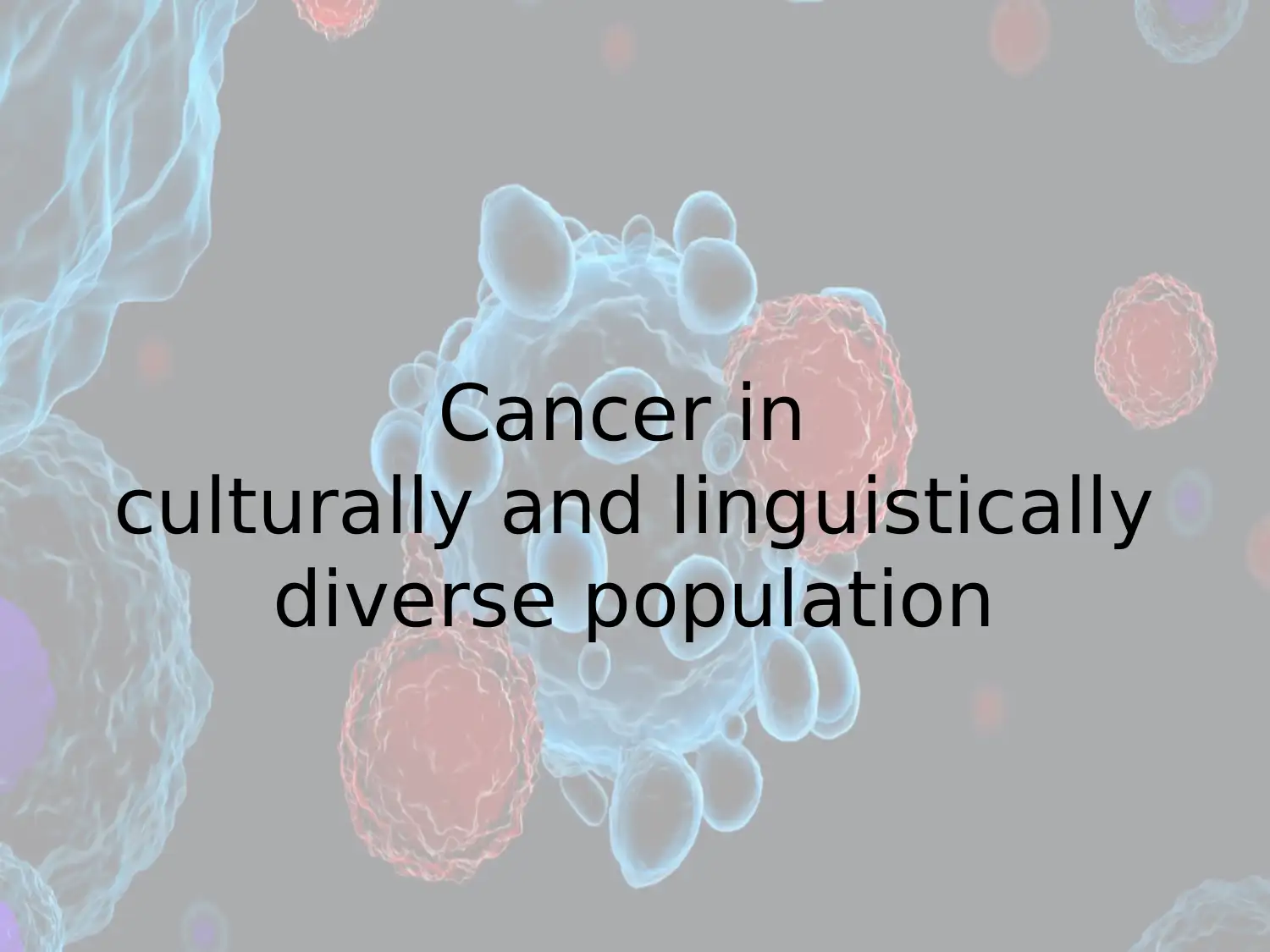
Cancer in
culturally and linguistically
diverse population
culturally and linguistically
diverse population
Paraphrase This Document
Need a fresh take? Get an instant paraphrase of this document with our AI Paraphraser

Introduction
• Cancer is a pernicious disease which mostly
affects the vulnerable population.
• According to the cancer council of New South
Wales, population who belongs to the culturally
and linguistically diverse communities is one of
the most vulnerable populations with high
mortality rate.
• They experience challenges in early detection
and appropriate diagnosis of the cancer.
• Cancer is a pernicious disease which mostly
affects the vulnerable population.
• According to the cancer council of New South
Wales, population who belongs to the culturally
and linguistically diverse communities is one of
the most vulnerable populations with high
mortality rate.
• They experience challenges in early detection
and appropriate diagnosis of the cancer.
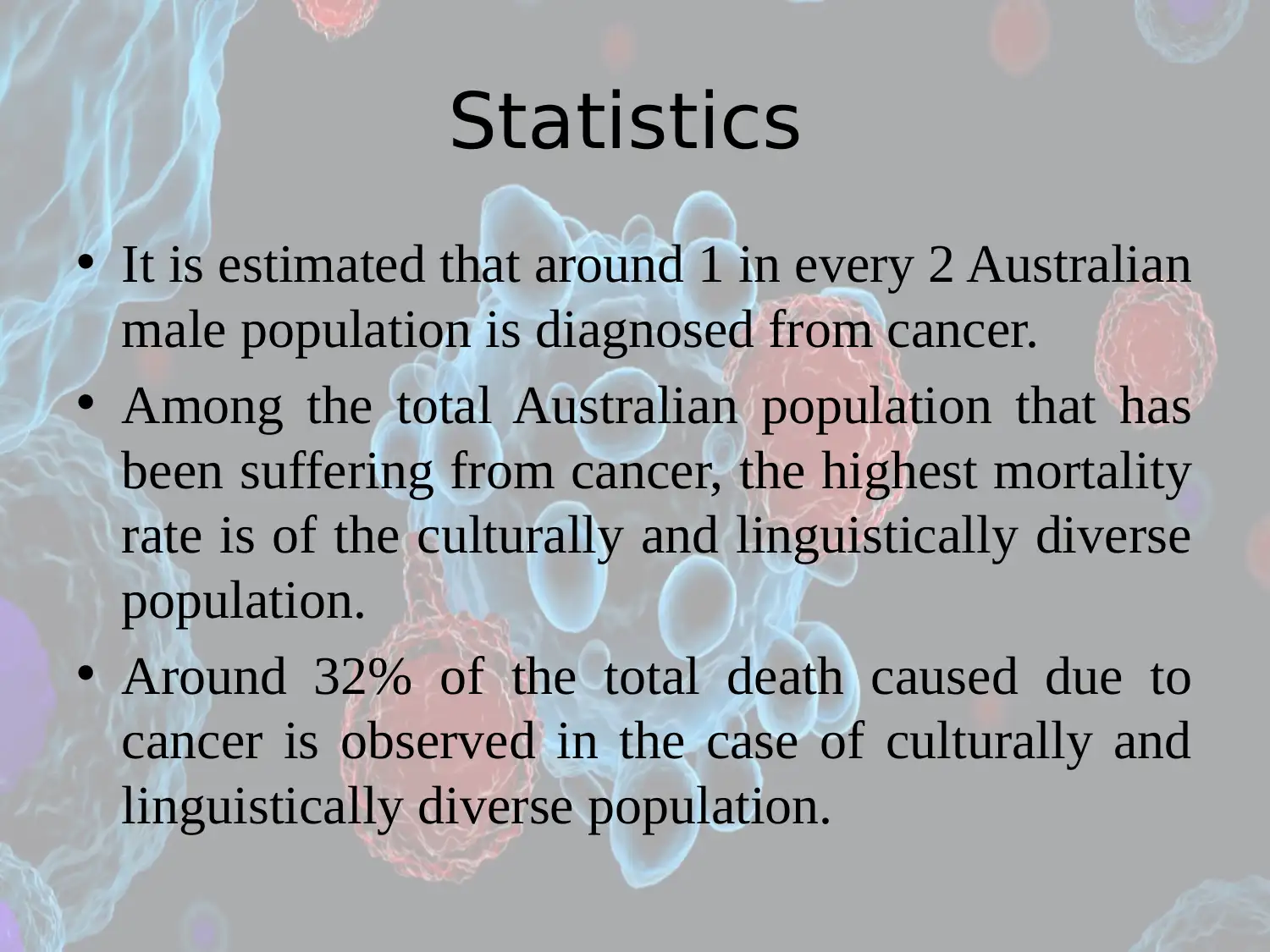
Statistics
• It is estimated that around 1 in every 2 Australian
male population is diagnosed from cancer.
• Among the total Australian population that has
been suffering from cancer, the highest mortality
rate is of the culturally and linguistically diverse
population.
• Around 32% of the total death caused due to
cancer is observed in the case of culturally and
linguistically diverse population.
• It is estimated that around 1 in every 2 Australian
male population is diagnosed from cancer.
• Among the total Australian population that has
been suffering from cancer, the highest mortality
rate is of the culturally and linguistically diverse
population.
• Around 32% of the total death caused due to
cancer is observed in the case of culturally and
linguistically diverse population.
⊘ This is a preview!⊘
Do you want full access?
Subscribe today to unlock all pages.

Trusted by 1+ million students worldwide
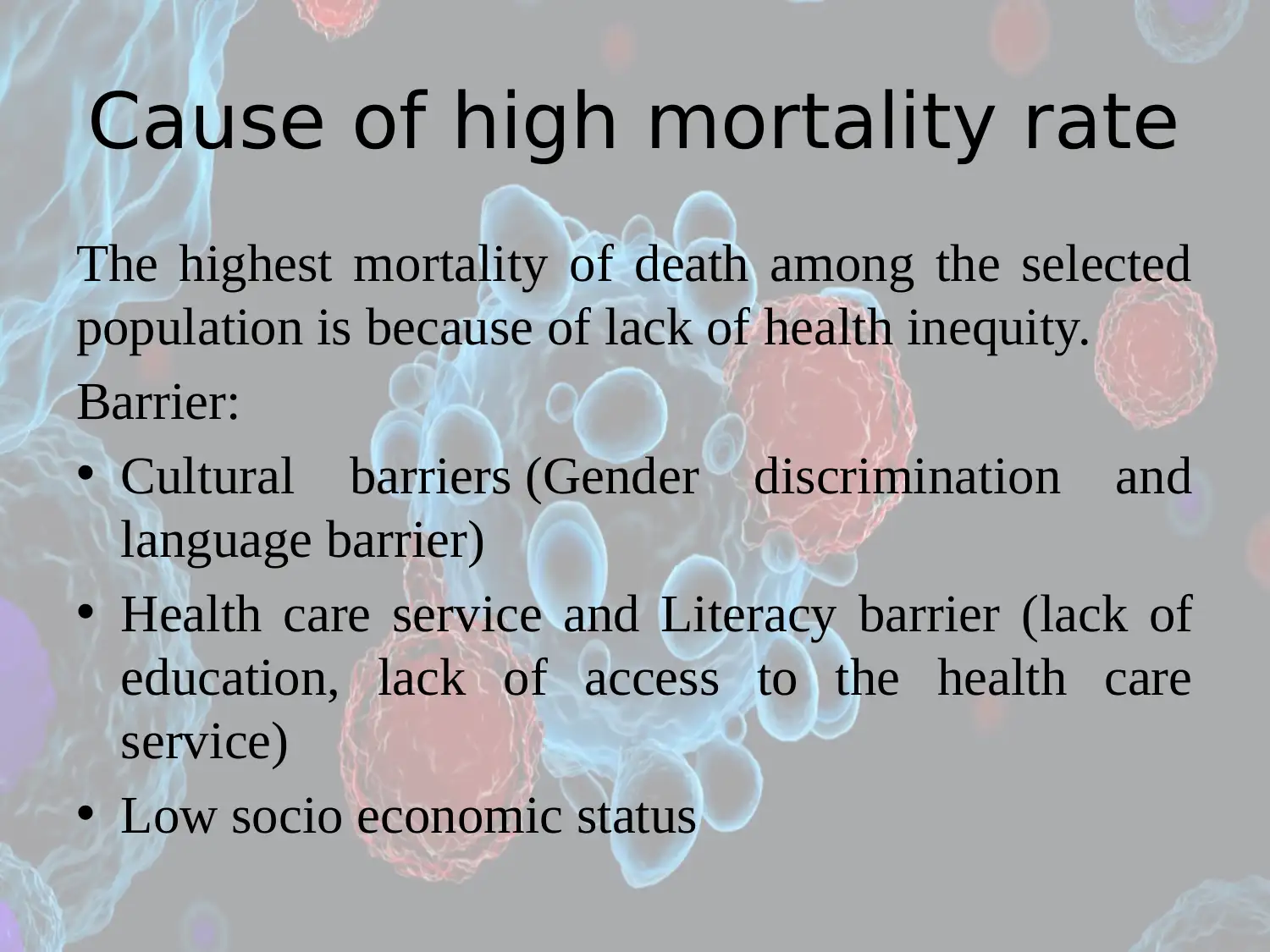
Cause of high mortality rate
The highest mortality of death among the selected
population is because of lack of health inequity.
Barrier:
• Cultural barriers (Gender discrimination and
language barrier)
• Health care service and Literacy barrier (lack of
education, lack of access to the health care
service)
• Low socio economic status
The highest mortality of death among the selected
population is because of lack of health inequity.
Barrier:
• Cultural barriers (Gender discrimination and
language barrier)
• Health care service and Literacy barrier (lack of
education, lack of access to the health care
service)
• Low socio economic status
Paraphrase This Document
Need a fresh take? Get an instant paraphrase of this document with our AI Paraphraser

Cultural barrier
• According to the Australian Bureau of Statistics,
18.25% of the total Australian population are
the native of another than that of the English
language.
• Due to low English proficiency and
misinterpretation of the body language, they
failed to receive proper medical service.
• It results to reduce quality of life and increases
the risk of cancer.
• According to the Australian Bureau of Statistics,
18.25% of the total Australian population are
the native of another than that of the English
language.
• Due to low English proficiency and
misinterpretation of the body language, they
failed to receive proper medical service.
• It results to reduce quality of life and increases
the risk of cancer.
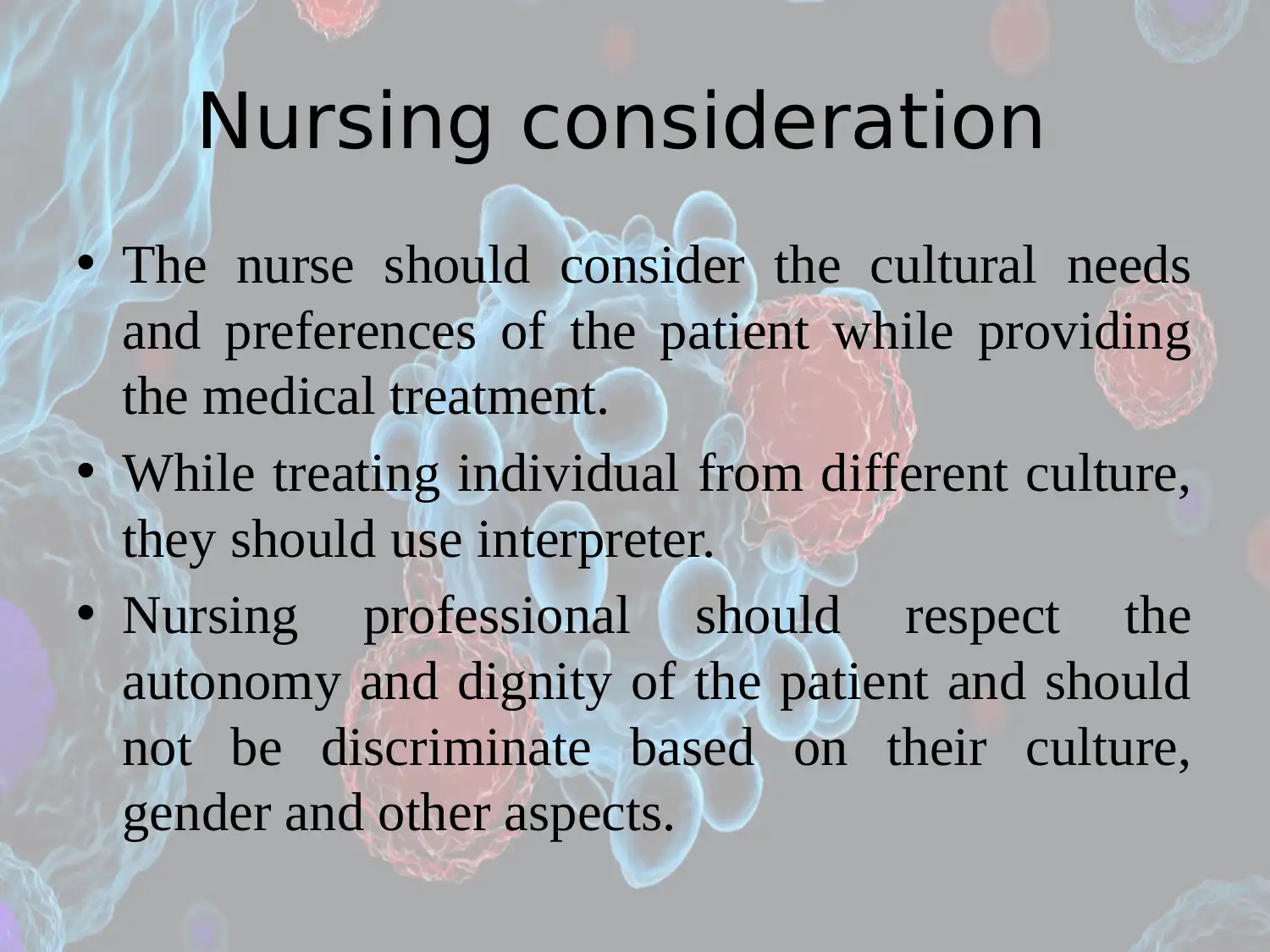
Nursing consideration
• The nurse should consider the cultural needs
and preferences of the patient while providing
the medical treatment.
• While treating individual from different culture,
they should use interpreter.
• Nursing professional should respect the
autonomy and dignity of the patient and should
not be discriminate based on their culture,
gender and other aspects.
• The nurse should consider the cultural needs
and preferences of the patient while providing
the medical treatment.
• While treating individual from different culture,
they should use interpreter.
• Nursing professional should respect the
autonomy and dignity of the patient and should
not be discriminate based on their culture,
gender and other aspects.
⊘ This is a preview!⊘
Do you want full access?
Subscribe today to unlock all pages.

Trusted by 1+ million students worldwide
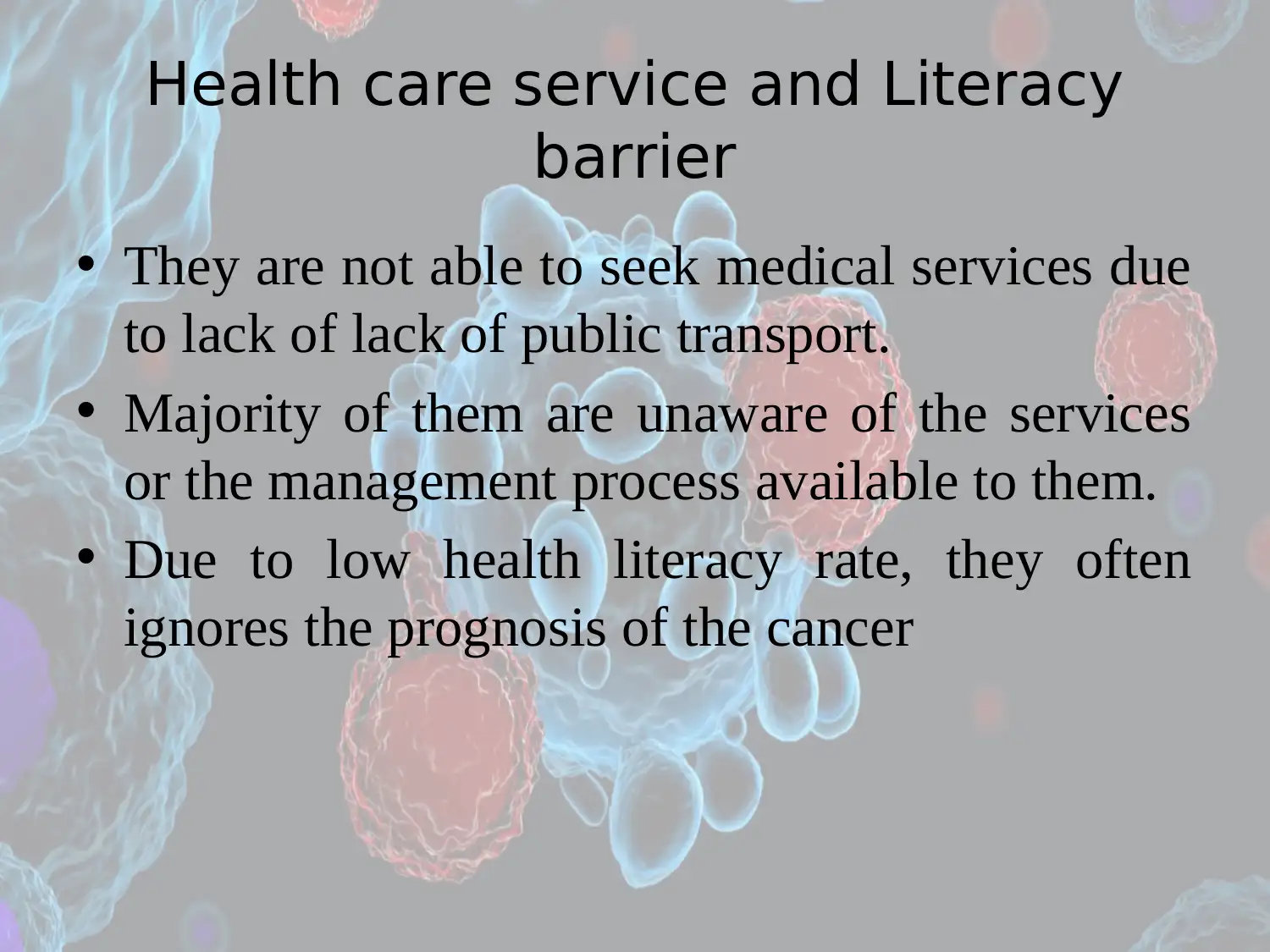
Health care service and Literacy
barrier
• They are not able to seek medical services due
to lack of lack of public transport.
• Majority of them are unaware of the services
or the management process available to them.
• Due to low health literacy rate, they often
ignores the prognosis of the cancer
barrier
• They are not able to seek medical services due
to lack of lack of public transport.
• Majority of them are unaware of the services
or the management process available to them.
• Due to low health literacy rate, they often
ignores the prognosis of the cancer
Paraphrase This Document
Need a fresh take? Get an instant paraphrase of this document with our AI Paraphraser
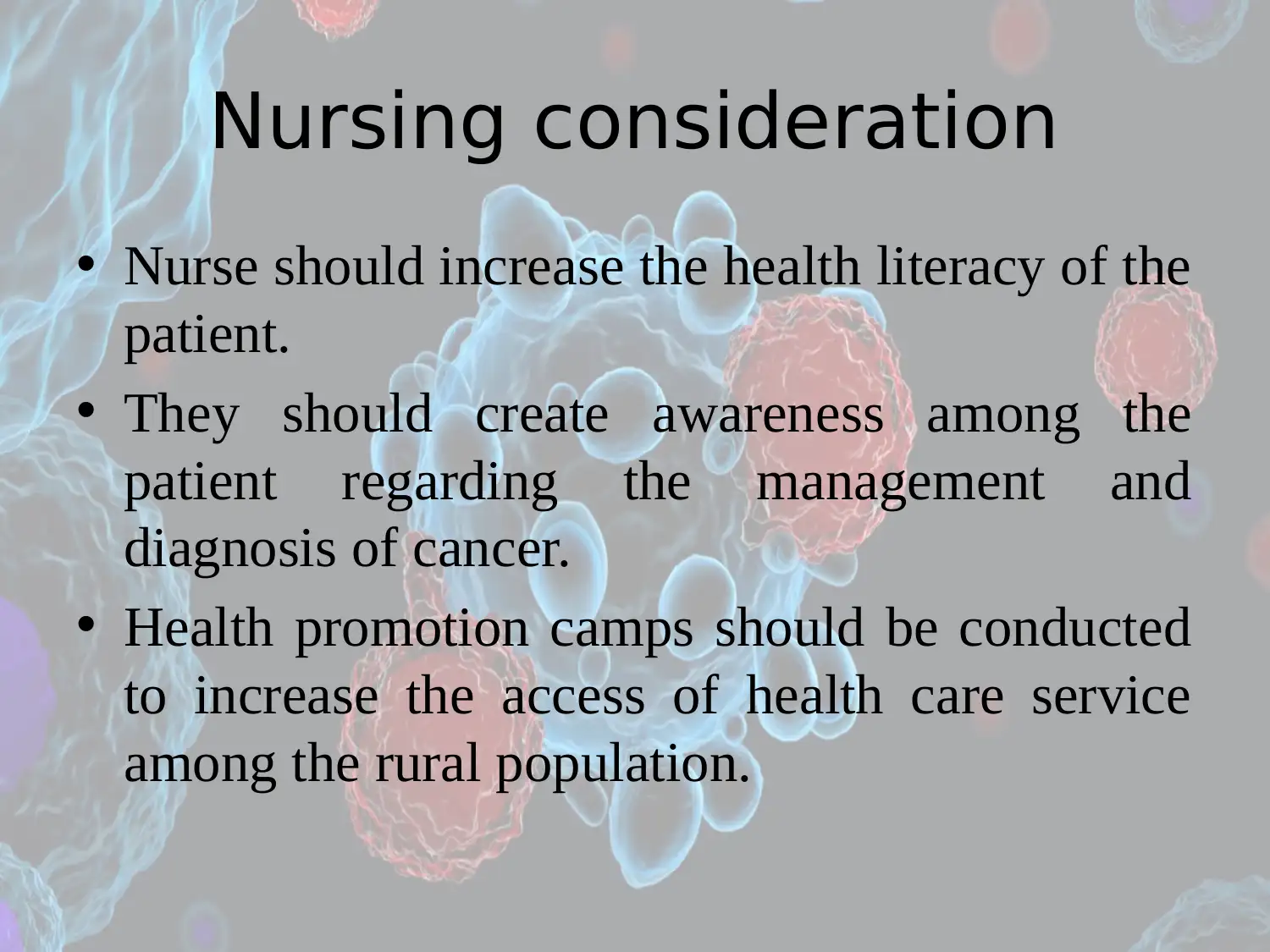
Nursing consideration
• Nurse should increase the health literacy of the
patient.
• They should create awareness among the
patient regarding the management and
diagnosis of cancer.
• Health promotion camps should be conducted
to increase the access of health care service
among the rural population.
• Nurse should increase the health literacy of the
patient.
• They should create awareness among the
patient regarding the management and
diagnosis of cancer.
• Health promotion camps should be conducted
to increase the access of health care service
among the rural population.
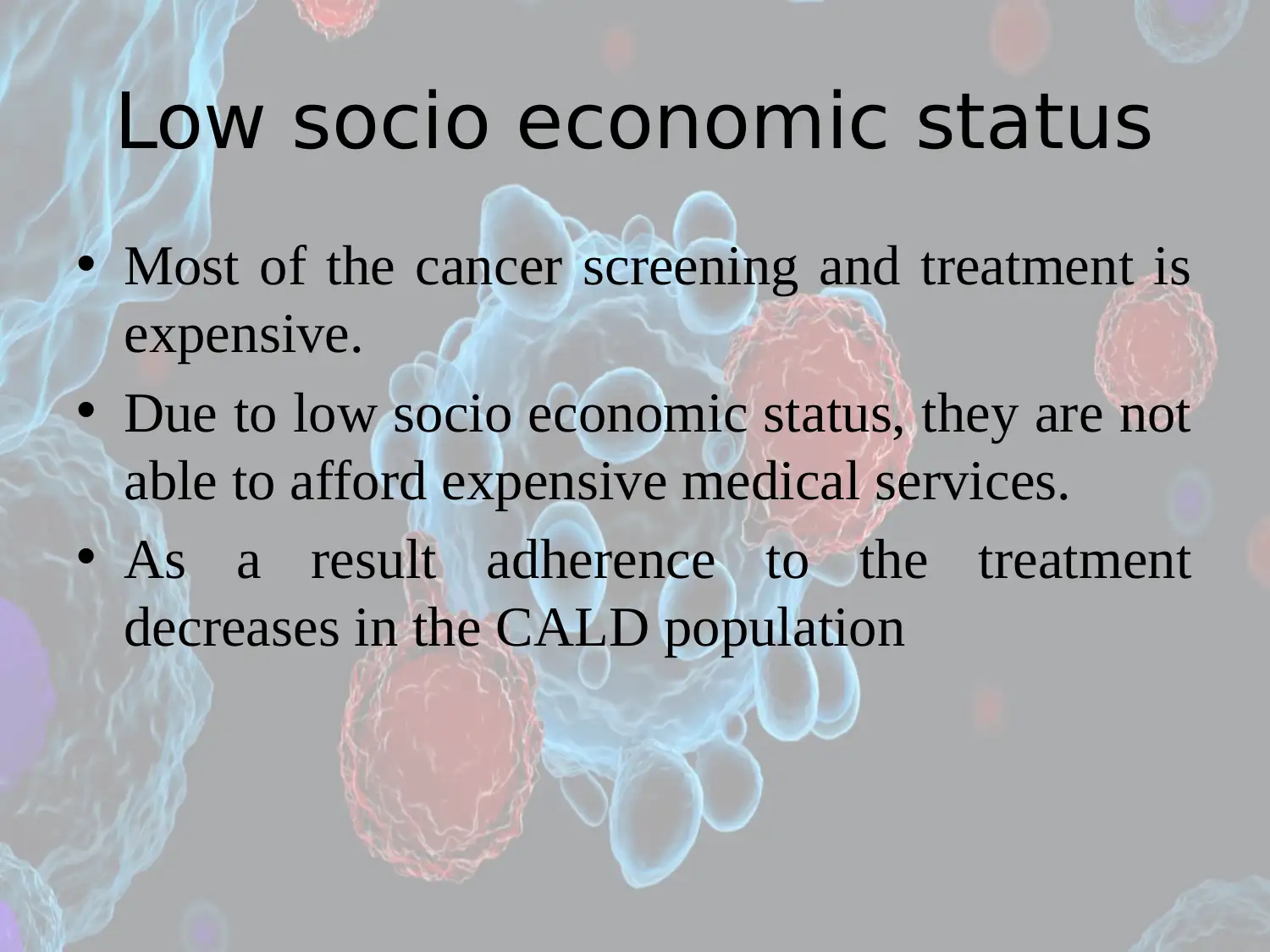
Low socio economic status
• Most of the cancer screening and treatment is
expensive.
• Due to low socio economic status, they are not
able to afford expensive medical services.
• As a result adherence to the treatment
decreases in the CALD population
• Most of the cancer screening and treatment is
expensive.
• Due to low socio economic status, they are not
able to afford expensive medical services.
• As a result adherence to the treatment
decreases in the CALD population
⊘ This is a preview!⊘
Do you want full access?
Subscribe today to unlock all pages.

Trusted by 1+ million students worldwide

Nursing consideration
• While suggesting the management and
intervention to the population, the nurse should
be aware of the client's economic status.
• The nurse should suggest affordable medical
services.
• They should use different method to enhance
patient empowerment to improve adherence to
the treatment.
• While suggesting the management and
intervention to the population, the nurse should
be aware of the client's economic status.
• The nurse should suggest affordable medical
services.
• They should use different method to enhance
patient empowerment to improve adherence to
the treatment.
Paraphrase This Document
Need a fresh take? Get an instant paraphrase of this document with our AI Paraphraser

References
Batterham, R. W., Hawkins, M., Collins, P. A., Buchbinder, R., & Osborne, R. H. (2016). Health literacy: applying current concepts to improve
health services and reduce health inequalities. Public health, 132, 3-12.
Betancourt, J. R., Green, A. R., Carrillo, J. E., & Owusu Ananeh-Firempong, I. I. (2016). Defining cultural competence: a practical framework for
addressing racial/ethnic disparities in health and health care. Public health reports.
Bristol, S., Kostelec, T., & MacDonald, R. (2018). Improving emergency health care workers’ knowledge, competency, and attitudes toward
lesbian, gay, bisexual, and transgender patients through interdisciplinary cultural competency training. Journal of Emergency Nursing, 44(6),
632-639.
Cullerton, K., Gallegos, D., Ashley, E., Do, H., Voloschenko, A., Fleming, M., ... & Gould, T. (2016). Cancer screening education: can it change
knowledge and attitudes among culturally and linguistically diverse communities in Queensland, Australia?. Health Promotion Journal of
Australia, 27(2), 140-147.
Doran, C. M., Ling, R., Byrnes, J., Crane, M., Searles, A., Perez, D., & Shakeshaft, A. (2015). Estimating the economic costs of skin cancer in
New South Wales, Australia. BMC public health, 15(1), 952.
Hacker, K., Anies, M., Folb, B. L., & Zallman, L. (2015). Barriers to health care for undocumented immigrants: a literature review. Risk
management and healthcare policy, 8, 175.
Hughson, J. A., Woodward-Kron, R., Parker, A., Hajek, J., Bresin, A., Knoch, U., ... & Story, D. (2016). A review of approaches to improve
participation of culturally and linguistically diverse populations in clinical trials. Trials, 17(1), 263.
Kilbourne, A. M., Beck, K., Spaeth Rublee, B., Ramanuj, P., O'Brien, R. W., Tomoyasu, N., & Pincus, H. A. (2018). Measuring and improving the‐
quality of mental health care: a global perspective. World psychiatry, 17(1), 30-38.
Lood, Q., Häggblom-Kronlöf, G., & Dahlin-Ivanoff, S. (2015). Health promotion programme design and efficacy in relation to ageing persons
with culturally and linguistically diverse backgrounds: a systematic literature review and meta-analysis. BMC health services research, 15(1),
560.
Raymaker, D. M., McDonald, K. E., Ashkenazy, E., Gerrity, M., Baggs, A. M., Kripke, C., ... & Nicolaidis, C. (2017). Barriers to healthcare:
Instrument development and comparison between autistic adults and adults with and without other disabilities. Autism, 21(8), 972-984.
Siegel, R. L., Miller, K. D., & Jemal, A. (2016). Cancer statistics, 2016. CA: a cancer journal for clinicians, 66(1), 7-30.
Thai, A., Tacey, M., White, S. C., Byrne, M., & Yoong, J. (2016). Exploring disparities in patients’ preference for adjuvant chemotherapy in
culturally and linguistically diverse (CALD) groups: One Australian centre’s experience.
Thomas, S. L., Wakerman, J., & Humphreys, J. S. (2015). Ensuring equity of access to primary health care in rural and remote Australia-what
core services should be locally available?. International journal for equity in health, 14(1), 111.
Www.abs.gov.au (2019). 2016 Census: Multicultural. Abs.gov.au. Retrieved from: https://www.abs.gov.au/ausstats/abs@.nsf/lookup/
Media%20Release3
Www.cancercouncil.com.au (2019). Cancer issues across the language divide | Cancer Council NSW. Cancer Council NSW. Retrieved from:
https://www.cancercouncil.com.au/65792/uncategorized/cancer-issues-across-the-language-divide/
Batterham, R. W., Hawkins, M., Collins, P. A., Buchbinder, R., & Osborne, R. H. (2016). Health literacy: applying current concepts to improve
health services and reduce health inequalities. Public health, 132, 3-12.
Betancourt, J. R., Green, A. R., Carrillo, J. E., & Owusu Ananeh-Firempong, I. I. (2016). Defining cultural competence: a practical framework for
addressing racial/ethnic disparities in health and health care. Public health reports.
Bristol, S., Kostelec, T., & MacDonald, R. (2018). Improving emergency health care workers’ knowledge, competency, and attitudes toward
lesbian, gay, bisexual, and transgender patients through interdisciplinary cultural competency training. Journal of Emergency Nursing, 44(6),
632-639.
Cullerton, K., Gallegos, D., Ashley, E., Do, H., Voloschenko, A., Fleming, M., ... & Gould, T. (2016). Cancer screening education: can it change
knowledge and attitudes among culturally and linguistically diverse communities in Queensland, Australia?. Health Promotion Journal of
Australia, 27(2), 140-147.
Doran, C. M., Ling, R., Byrnes, J., Crane, M., Searles, A., Perez, D., & Shakeshaft, A. (2015). Estimating the economic costs of skin cancer in
New South Wales, Australia. BMC public health, 15(1), 952.
Hacker, K., Anies, M., Folb, B. L., & Zallman, L. (2015). Barriers to health care for undocumented immigrants: a literature review. Risk
management and healthcare policy, 8, 175.
Hughson, J. A., Woodward-Kron, R., Parker, A., Hajek, J., Bresin, A., Knoch, U., ... & Story, D. (2016). A review of approaches to improve
participation of culturally and linguistically diverse populations in clinical trials. Trials, 17(1), 263.
Kilbourne, A. M., Beck, K., Spaeth Rublee, B., Ramanuj, P., O'Brien, R. W., Tomoyasu, N., & Pincus, H. A. (2018). Measuring and improving the‐
quality of mental health care: a global perspective. World psychiatry, 17(1), 30-38.
Lood, Q., Häggblom-Kronlöf, G., & Dahlin-Ivanoff, S. (2015). Health promotion programme design and efficacy in relation to ageing persons
with culturally and linguistically diverse backgrounds: a systematic literature review and meta-analysis. BMC health services research, 15(1),
560.
Raymaker, D. M., McDonald, K. E., Ashkenazy, E., Gerrity, M., Baggs, A. M., Kripke, C., ... & Nicolaidis, C. (2017). Barriers to healthcare:
Instrument development and comparison between autistic adults and adults with and without other disabilities. Autism, 21(8), 972-984.
Siegel, R. L., Miller, K. D., & Jemal, A. (2016). Cancer statistics, 2016. CA: a cancer journal for clinicians, 66(1), 7-30.
Thai, A., Tacey, M., White, S. C., Byrne, M., & Yoong, J. (2016). Exploring disparities in patients’ preference for adjuvant chemotherapy in
culturally and linguistically diverse (CALD) groups: One Australian centre’s experience.
Thomas, S. L., Wakerman, J., & Humphreys, J. S. (2015). Ensuring equity of access to primary health care in rural and remote Australia-what
core services should be locally available?. International journal for equity in health, 14(1), 111.
Www.abs.gov.au (2019). 2016 Census: Multicultural. Abs.gov.au. Retrieved from: https://www.abs.gov.au/ausstats/abs@.nsf/lookup/
Media%20Release3
Www.cancercouncil.com.au (2019). Cancer issues across the language divide | Cancer Council NSW. Cancer Council NSW. Retrieved from:
https://www.cancercouncil.com.au/65792/uncategorized/cancer-issues-across-the-language-divide/
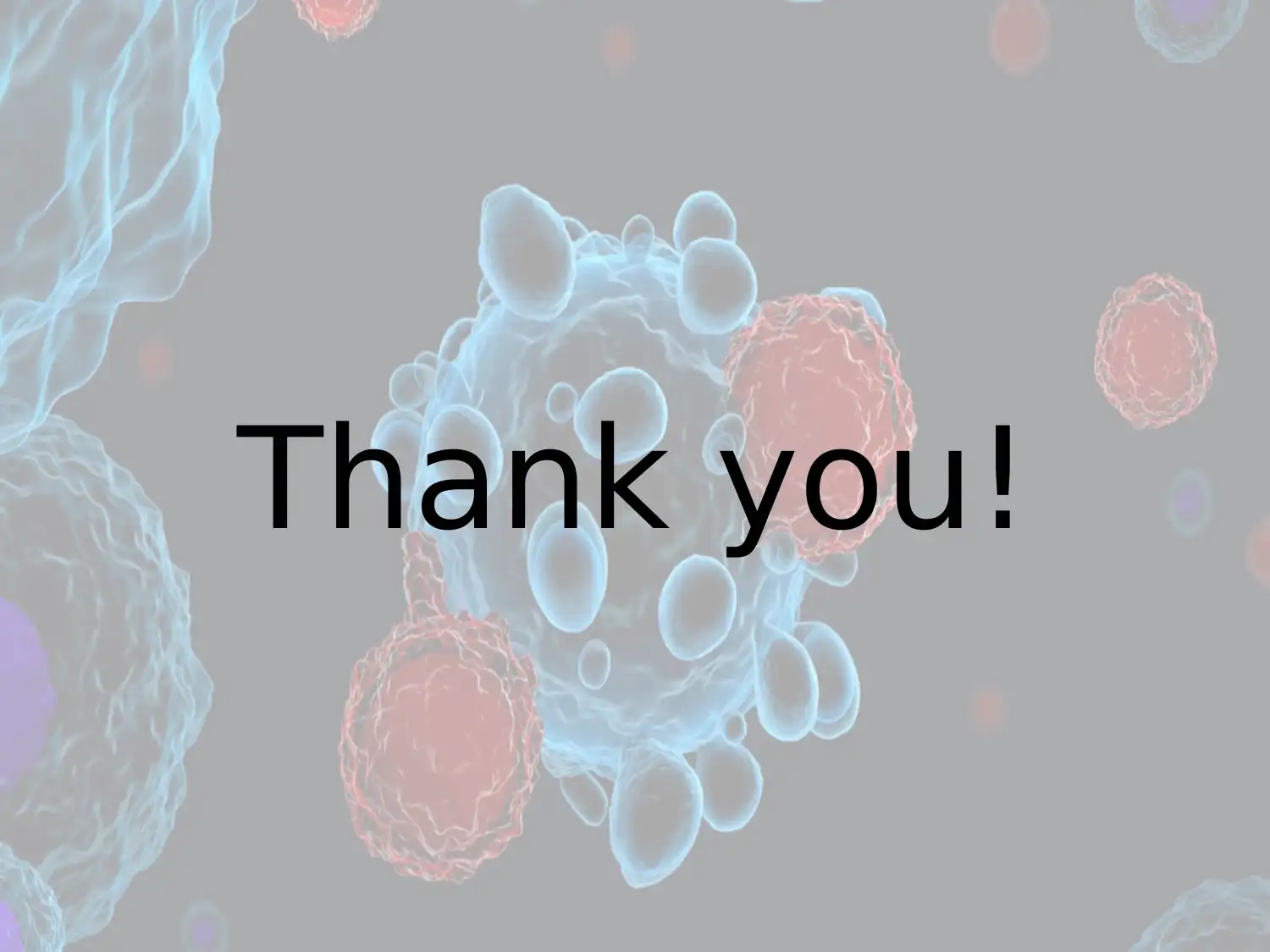
Thank you!
⊘ This is a preview!⊘
Do you want full access?
Subscribe today to unlock all pages.

Trusted by 1+ million students worldwide
1 out of 12
Related Documents
Your All-in-One AI-Powered Toolkit for Academic Success.
+13062052269
info@desklib.com
Available 24*7 on WhatsApp / Email
![[object Object]](/_next/static/media/star-bottom.7253800d.svg)
Unlock your academic potential
Copyright © 2020–2025 A2Z Services. All Rights Reserved. Developed and managed by ZUCOL.





